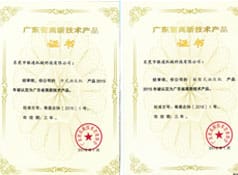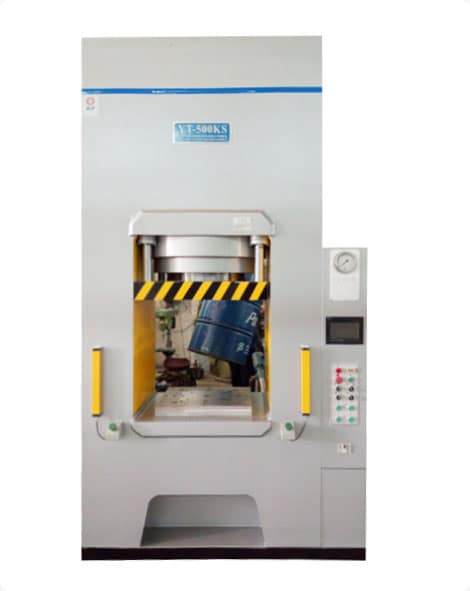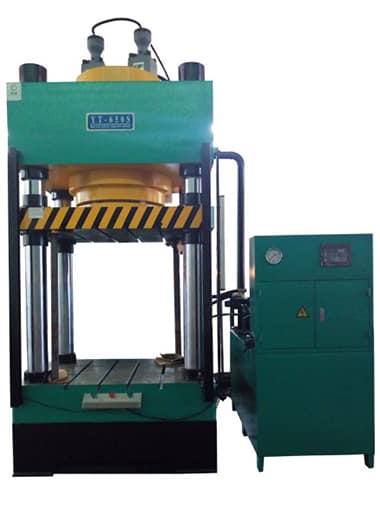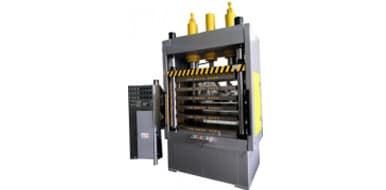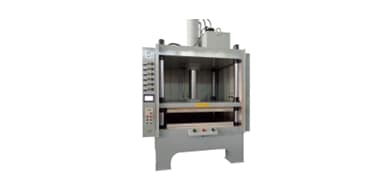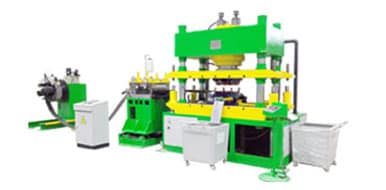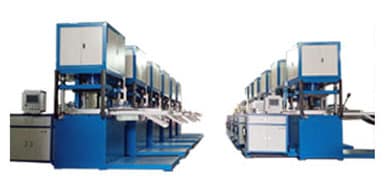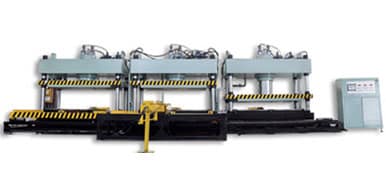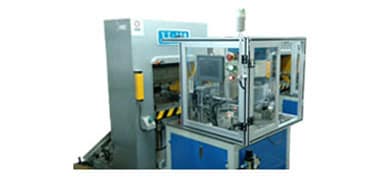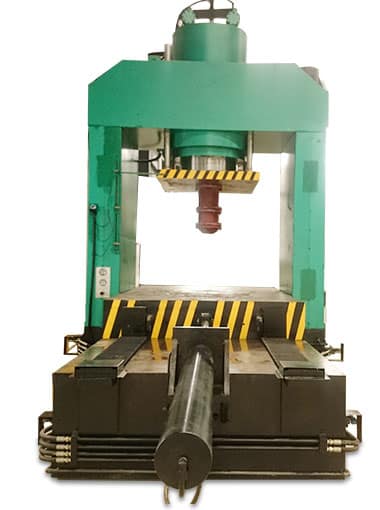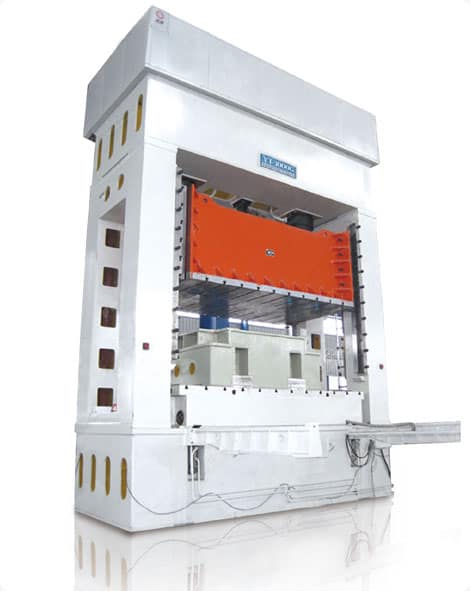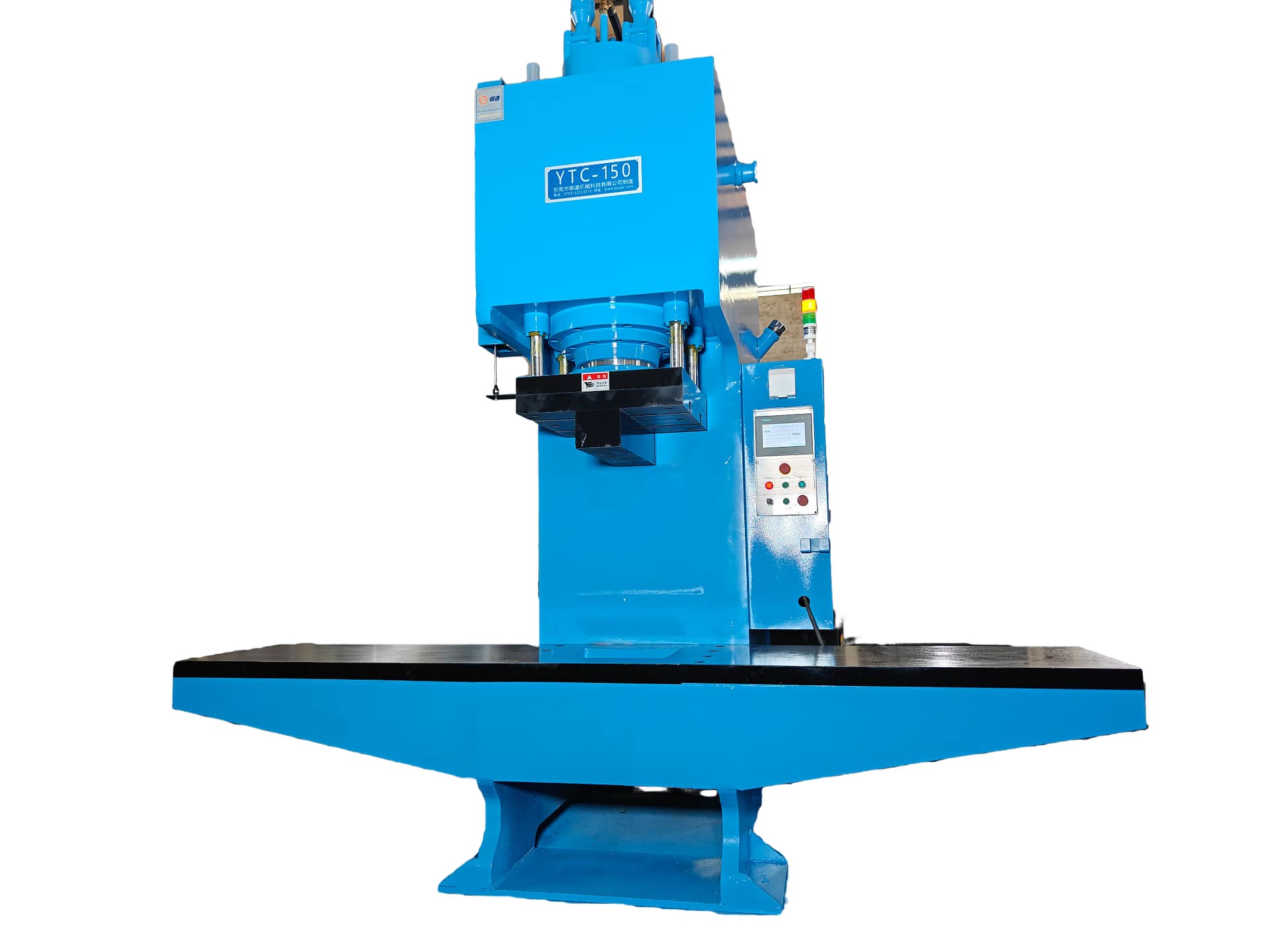What Kind of Gauge Does a Hydraulic Press Have?
time:2023-06-06 views:(点击 1,000 次)Pascal's Law allows a hydraulic press to produce incredible forces, making it ideal for metalworking, manufacturing and automotive applications.
Select a gauge with the appropriate measurement range for your hydraulic application, while keeping in mind its connection size and material compatibility.
Glycerine-filled gauges are ideal for hydraulic applications as they can withstand vibration. This ensures accurate readings and extends their lifespan, prolonging their longevity as a gauge.
1. Pressure Gauge
Pressure gauges are a ubiquitous component in industrial machines. You're unlikely to leave any plant or factory without seeing one of these measuring instruments - they serve to measure fluid press intensity with measurements like pounds per square inch (psi) or newtons per square centimeter, commonly referred to as pascal.
Hydraulic systems utilize pressure gauges to monitor the press cylinders' pressure. This enables operators to detect any problems with them, such as low pressure or leaks, that could cause harm. Regular monitoring helps ensure that all components in the system remain undamaged while also making sure cylinders can bear loads without fail.
Different pressure gauges can meet the requirements of different applications. Some systems, for instance, may necessitate greater resolution or accuracy than others. A wider measurement range may also be important depending on your specific situation.
Probably the most widely-used type of gauge is a Bourdon tube gauge, with its small, curved tube enclosed within an open and sealed chamber at both ends. When pressurized with liquid or air pressure, its inner chamber expands like an inflatable balloon to provide pressure readings on its dial display. These gauges can even be pre-calibrated for specific ranges reducing any need to calibrate it yourself.
Liquid column gauges are another popular form of pressure gauge, comprising of a tube half-filled with liquid. Under pressure, this liquid will rise until reaching equilibrium with any pressure differences between both ends of the tube - making them suitable for applications where different pressures exist within an environment.
A piston-type pressure gauge uses either springs or deadweight testers to counterbalance fluid pressure with solid weights known as deadweight testers, then calibrating against an international standard calibration bar for accurate results. European standard EN 837 provides standard procedures, design requirements, and testing methods for commonly used gauges.
2. Force Gauge
A force gauge, also referred to as a push pull force gauge or tension and compression force gauge, is an invaluable device used across industries and applications for testing and quality control purposes. Simply put, these devices measure the magnitude of force applied during push and pull tests, providing quality professionals with useful data for assessing finished products' quality and quantifying their levels of quality.
There are various kinds of force gauges on the market, some more advanced than others. Digital force gauges are among the most commonly available; typically consisting of a load cell, electronic part, software and display. Load cells convert mechanical deformation of force to electrical signals processed by software which are then displayed on screen for viewing or analysis (only digital models support this capability). Some models even support data storage on connected computers for further data analysis or storage (digital models only).
When purchasing a digital force gauge, it is crucial that its capacity matches that of your desired test pressure. Otherwise, this could damage its internal components. Furthermore, it should withstand sudden changes in pressure without succumbing to sudden spikes. A glycerine-filled gauge may be ideal in such instances since its liquid dampens needle vibration and prolongs usable lifespan.
Other key considerations when purchasing a digital force gauge include its sample rate - this refers to how often force value data samples are taken and measured in Hertz (Hz). Furthermore, some digital models come equipped with remote load sensors for more convenient testing conditions, or feature interchangeable probes or sensors which measure both torque and force simultaneously.
Finally, it is essential to select a device with support for multiple languages on its display screen. This is necessary because many companies rely on force gauges for international operations and need devices which are easily understood by employees from diverse backgrounds.
3. Temperature Gauge
Hydraulic pressure gauges come in many varieties; dry, digital or glycerine filled are all options available. Glycerine-filled gauges have numerous advantages over their dry or digital counterparts: needle movement is reduced while vibration is lessened for clearer readings and longer life, insulate mechanical components against sudden temperature changes and help protect them from being damaged - ideal for applications where there may be pressure spikes such as on-site hydraulic applications where spikes could arise from unexpected pressure spikes a glycerine-filled gauge is the preferred choice glycerine gauge is ideal.
Eugene Bourdon revolutionized pressure measurement when he created the Bourdon Tube Gauge in 1849. Consisting of a U-shaped tube half filled with liquid, its other end connected to a system being tested, when there is an imbalance between pressure on either side, the level will either rise or decrease depending on which way is greater.
Another type of hydraulic pressure gauges is the diaphragm gauge, which uses deformation of a flexible thin membrane to measure pressure changes. As pressure fluctuates, its deformation causes strain on a piezoelectric crystal to vary, creating an electrical signal and translating that variation to readout on a dial pointer which reads out pressure values.
Bellows hydraulic pressure gauges consist of corrugated expandable devices made of brass or stainless steel that feature an expandable device with an expandable point that moves when there is pressure applied. A Bourdon tube provides this necessary expansion while a pointer on a dial indicates pressure levels.
There are also other varieties of hydraulic pressure gauges, including the spinning-rotor gauge and liquid column gauges. A spinning rotor gauge consists of a magnetically levitated ball inside a tube with one end sealed off from gas being measured, the other open for exposure. When rotating, its deceleration speed corresponds with viscosity of gas being measured and this measurement can be made. In addition, vibration damage to this form of gauge is minimal compared with others types.
When selecting a hydraulic pressure gauge, it's essential to take several factors into account, including maximum operating temperature and unit of measurement. An IP code protects it against dust, condensation and water splashes; additional factors should include connection size and material considerations such as location; whether to opt for dial or digital display and compatibility with your application; as well as potential hazards such as explosions of gauges leaking hydraulic fluid or injuries due to pressurized connections. Having the appropriate gauge can prevent many serious risks such as explosions of gauges exploding while also helping avoid numerous hazards like explosions of gauges leaking hydraulic fluid or injuries due to pressurized connections - an essential step when buying any product -
4. Temperature Sensor
Utilizing a hydraulic press with sensors that monitor both temperature and pressure is an efficient way to manage your process more effectively. These sensors can detect changes in sealant viscosity due to temperature variations, helping you prevent overdispensing sealant. They can also alert you of problems like overpressure which might damage pumps and cylinders.
Hydraulic presses differ from mechanical presses by using a piston that can move across the entire surface of the cylinder, making them far more versatile in production, testing and laboratory environments. Hydraulic presses also excel at producing parts requiring high pressure at controlled temperature settings - such as heat seals on plastic packaging - with ease. Their temperature measurement sensor, known as a piezoelectric element capable of withstanding high pressure levels yet providing electrical signals into temperature readings; this can either be mounted directly onto a cylinder or in the hydraulic control system itself.
An adaptor ensures the male end of a gauge fits securely into its port on a hydraulic pump or cylinder, with its female end receiving either a hose or coupler. A snubber valve may also be included to absorb shock during sudden changes in pressure and avoid snapping off dial pointers.
Most industrial hydraulic pressure gauges are Bourdon tube styles, consisting of an inner curved tube fitted with a sealed diaphragm. When pressure increases, this diaphragm stretches and straightens out, prompting needle movement up or down. There are also glycerin-filled, electronic digital and solid state gauges which employ various methods of measuring pressure.
Hydraulic pressure gauges have numerous applications, from monitoring system pressure for hydraulic presses, cylinders and high-pressure systems; to weighing and testing; measuring force supported by jacks or cylinders; as well as checking hoses, connections or ports. Most have circular cases equipped with threaded process connections and dual scales indicating both system pressure and force readings.
If you are unfamiliar with hydraulic pressure gauge ratings, H J Kirby Corp advises consulting your supplier for assistance when selecting an ideal gauge for your application. We offer custom dials in any force units - Newtons and metric tons as well as standard glycerin-filled pressure gauges from industry leaders such as ifm, BD|SENSORS and Bosch Rexroth - designed specifically to suit every force unit application.
Link to this article: https://www.ihydraulicpress.com/yn/3535.html
Hot Articles
-
Where to Buy Hydraulic Press Juicer
We may receive compensation or products from companies mentioned here, although their pricing information was accurate at the time of publishing (……
-
What Is a Hydraulic Press Used For in the Medical Industry?
Hydraulic presses are used to shape materials into desired shapes. They’re commonly used in medical, dental and pharmaceutical fields. Hydraul……
-
Disadvantages of a Hydraulic Press
Hydraulic presses are powerful machines that can be employed for a variety of tasks. However, these tools also have their drawbacks. When purchasing……
-
What is the Biggest Hydraulic Press in the World?
Hydraulic presses are machine tools that use static pressure to process materials such as metal, wood, plastic and powdered products. They’r……
-
What is the Principle Demonstrated by a Hydraulic Press?
Hydraulic presses are common tools in auto shops to raise vehicles. Their operation follows Pascal’s Law, which states that applied force in……
-
What Is Thread On Pressure Gage For Hydraulic Press?
Are you curious as to the type of connection your pressure gauge uses? One way is to take it out from its process and observe its threads; however, ……
-
Why Were Hydraulic Presses Made?
Hydraulic presses are widely utilized by metal industries for crushing large pieces of nonliving material into flat shapes, similar to how pounding ……
-
What is the Principle Demonstrated by a Hydraulic Press?
Hydraulic presses are pieces of industrial machinery that use hydraulic cylinders to produce massive compressive force, often used in manufacturin……
Latest News
-
What Is Hydraulic Press Machine Price?
A hydraulic press uses liquid pressure to produce force, making it capable of forging, assembling, drawing, punching, stretching, stamping and pre……
-
Hydraulic Presses Used in the Medical Industry
Hydraulic presses are highly productive machines that enable manufacturers to finish tasks rapidly and efficiently. They’re even used in the m……
-
Where to Buy Hydraulic Press Pump
Hydraulics is a mechatronic technology that utilizes fluid pressure to multiply mechanical forces. Hydraulics is widely used to press, assemble, dra……
-
Where to Buy Hydraulic Press Plates
If your shop press is showing signs of wear and tear, it could be time for new plates. Instead of risking injury by opting for less durable options ……
-
What Does Hydraulic Press Do?
Hydraulic presses play an essential part in numerous fabrication and production processes, from car crushing to producing fat-free cocoa powder. The……
-
How to Maintain a Hydraulic Press
If your business relies on hydraulic presses, it’s essential to keep them running safely and efficiently. By following a regular maintenance r……
-
What Kind of Gauge Does a Hydraulic Press Have?
Pascal’s Law allows a hydraulic press to produce incredible forces, making it ideal for metalworking, manufacturing and automotive application……
-
The Difference Between Power Press and Hydraulic Press
Hydraulic presses are used across a wide range of industries for fabrication, assembly and maintenance. They use a pump to apply pressure to a steel……



